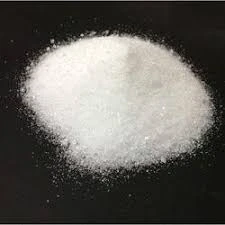Understanding HPMC Detergent Grade Properties and Applications
Hydroxypropyl Methylcellulose (HPMC) is a versatile cellulose ether widely used in various industries due to its unique properties and functionalities. Among its many grades, HPMC detergent grade has gained significant attention for its specialized applications in formulating detergents and cleaning products. This article delves into the characteristics, benefits, and applications of HPMC detergent grade, shedding light on why it has become a crucial ingredient in modern cleaning formulations.
What is HPMC?
HPMC is a non-ionic, water-soluble polymer derived from cellulose. It is created through a chemical process that alters the structure of cellulose, facilitating the addition of hydroxypropyl and methoxy groups. This modification enhances its solubility and stability in various pH ranges, making HPMC suitable for a wide array of applications across industries, including pharmaceuticals, food, and personal care.
Characteristics of HPMC Detergent Grade
HPMC detergent grade is characterized by its high level of purity, excellent water retention properties, and superior thickening ability. These properties are particularly beneficial in formulating liquid detergents, as they help maintain consistency and improve the overall performance of the product. The key characteristics include
1. Solubility HPMC detergent grade dissolves easily in cold and hot water, making it ideal for various formulations. 2. Viscosity Control It acts as a thickening agent, providing optimal viscosity levels that enhance user experience during application. 3. Stability With a tolerance for a wide range of pH levels, HPMC detergent grade remains stable and effective in diverse cleaning environments. 4. Film-Forming Ability It can form thin films, allowing for improved adhesion and performance on surfaces.
Benefits of HPMC Detergent Grade
hpmc detergent grade

The incorporation of HPMC detergent grade in cleaning formulations offers numerous advantages
1. Enhanced Cleaning Performance HPMC contributes to the effectiveness of surfactants, allowing for improved wetting and penetration into soils, leading to better cleaning outcomes. 2. Eco-Friendly Option As a natural polymer, HPMC is biodegradable and offers an environmentally friendly alternative to synthetic additives, making it appealing for sustainable product lines. 3. Compatibility HPMC detergent grade can be easily blended with other ingredients, such as fragrances, colorants, and additional surfactants, allowing formulators the flexibility to create versatile products. 4. Improved Texture The addition of HPMC provides a pleasant texture and feel to liquid detergents, enhancing user experience and satisfaction.
Applications of HPMC Detergent Grade
HPMC detergent grade is used across various cleaning products, including
1. Liquid Laundry Detergents Its thickening properties help achieve the desired viscosity while enhancing cleaning efficiency. 2. Dishwashing Liquids HPMC aids in the formulation of concentrated dishwashing liquids, improving the product's performance while providing a soft texture for user application. 3. Surface Cleaners It enhances the cleaning power of surface cleaners by improving wetting and penetration, ensuring effective removal of dirt and grime. 4. Industrial Cleaners HPMC detergent grade is also popular in industrial applications where heavy-duty cleaning is required, thanks to its effective soil penetration capabilities.
Conclusion
HPMC detergent grade plays a vital role in the formulation of modern cleaning products. With its exceptional properties and benefits, it meets the growing demands for effective, user-friendly, and environmentally conscious cleaning solutions. As industries continue to innovate, the versatility and performance of HPMC detergent grade will undoubtedly make it a staple in the cleaning product formulation landscape.




